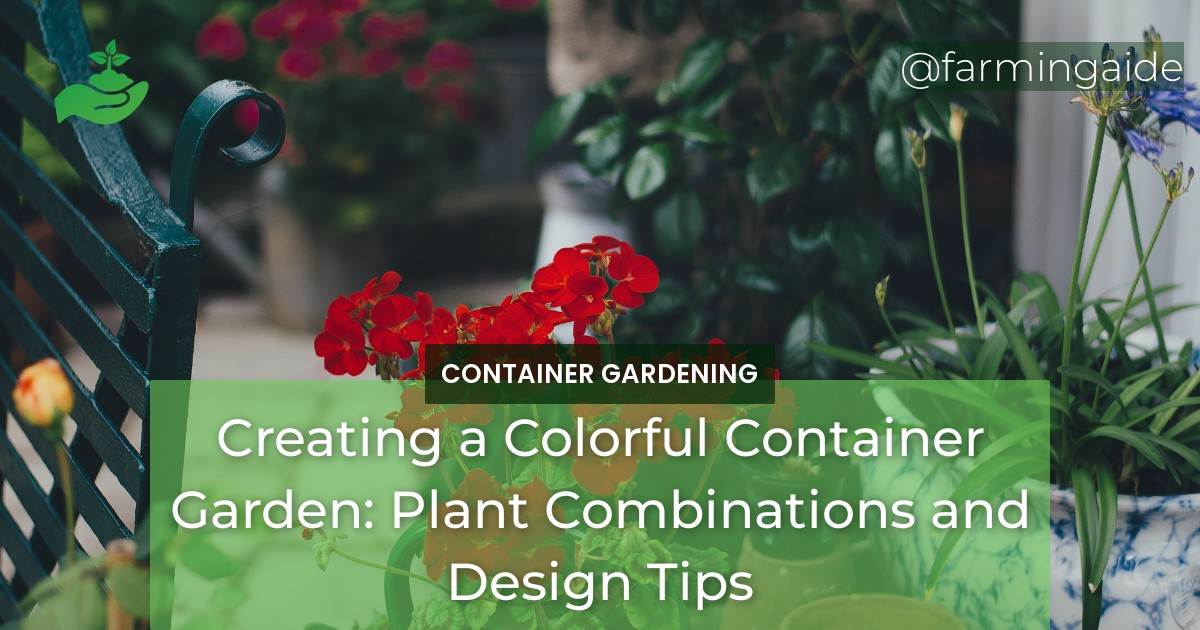Introduction
Container gardening is a great way to add color and texture to any outdoor space, regardless of size. Whether you have a small balcony or a spacious patio, a well-designed container garden can add visual interest and create a focal point in your outdoor space.
In this article, we will discuss the importance of creating colorful container garden design and highlight some of the best plant pairings and design tips to help you achieve that.
Table of Contents
Choosing Plants for a Colorful Container Garden
Factors to Consider
When choosing plants for your container garden, there are a few factors to consider that can affect the success of your plants. These factors include:
Climate and Growing Conditions
Before selecting plants, consider the climate and growing conditions of your area. Choose plants that are suited to the amount of sunlight and moisture your containers will receive.
Plant Size and Growth Habits
Consider the mature size of each plant and its growth habits. Choose plants that are compatible in size and growth habit to avoid overcrowding and competition.
Color and Texture
Choose plants with a variety of colors and textures to create visual interest. Consider how the colors and textures of your plants will complement or contrast with each other.
Complementary and Contrasting Colors
When selecting plants, consider complementary and contrasting colors. Complementary colors are opposite each other on the color wheel and create a harmonious effect when paired together. Contrasting colors are adjacent to each other on the color wheel and create a bold, eye-catching effect when paired together.
Recommended Plants for Container Gardening
When it comes to container gardening, the possibilities are endless. Here are some plant suggestions for each plant category:
Annuals
– Petunias
– Impatiens
– Marigolds
– Geraniums
– Snapdragons
Perennials
– Daylilies
– Coneflowers
– Hostas
– Salvia
– Sedum
Shrubs
– Boxwood
– Euonymus
– Hydrangeas
– Dwarf Japanese Maples
– Weigela
Ornamental Grasses
– Blue Fescue
– Maiden Grass
– Fountain Grass
– Sedge
– Japanese Forest Grass
ALSO READ
Designing Your Container Garden
Container Selection
The container you choose can make a big impact on the overall look of your container garden. When selecting a container, consider the following:
Materials
Containers come in a variety of materials, including clay, concrete, plastic, metal, and wood. Consider the materials that will work best with your plant selection and design style.
Size and Shape
Consider the size and shape of your container in relation to your plant selection. Larger containers allow for more plants and root space, but also require more soil and water. Consider the scale of your outdoor space when selecting container size and shape.
Drainage
Ensure your container has adequate drainage to prevent root rot and other plant problems.
Combining Plants
When it comes to combining plants, there are a few guidelines to follow to ensure success. Consider the following when planting your container garden:
Thrillers, Fillers, and Spillers
Create visual interest by combining plants with different heights and growth habits. Thrillers are tall, eye-catching plants that add height and drama to your container garden. Fillers are medium-height plants that fill in the gaps between thrillers and spillers. Spillers are trailing plants that cascade over the edges of your container.
Planting Techniques
When planting your container garden, start with a good quality potting mix and place a layer of gravel or rocks at the bottom of your container for drainage. Place your plants in the container and fill in with potting mix, leaving enough space for watering.
Planting Schemes for Different Container Sizes
When creating a container garden, consider the scale of your container and outdoor space. For larger containers, consider grouping plants in odd numbers for a more natural look. For smaller containers, stick to one or two plant types to avoid overcrowding.
Maintenance Tips
Maintaining your container garden is important to ensure the health and longevity of your plants. Consider the following maintenance tips:
Watering
Water your container garden regularly, especially during hot and dry weather. Ensure your container has adequate drainage to prevent overwatering.
Fertilizing
Fertilize your container garden regularly with a balanced fertilizer to promote healthy growth.
Pruning
Prune your plants regularly to promote bushier growth and remove dead or damaged leaves.
Pest and Disease Control
Monitor your plants regularly for pests and diseases and take action as soon as possible to prevent further damage.
Conclusion
Creating a colorful container garden is a fun and rewarding way to add beauty and interest to your outdoor space. By considering plant pairings and design tips, you can create a visually stunning container garden that will be the envy of your neighborhood. Experiment with different plant combinations, container designs, and placement to find the perfect combination for your outdoor space.
RELATED ARTICLES:


